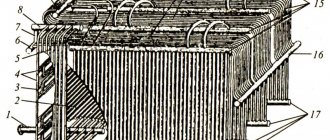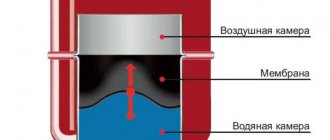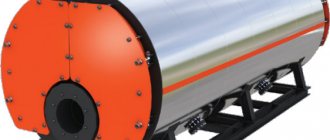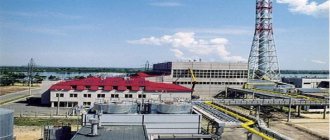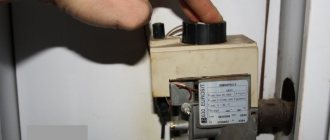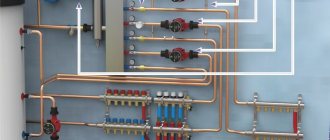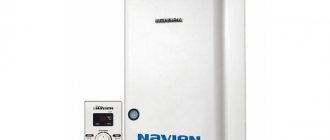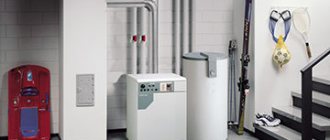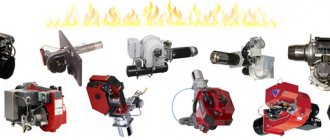Types of boilers by fuel type
Structurally, boilers differ in installation, fuel, power, materials of manufacture.
The purpose of heating equipment is to heat the coolant to ensure heating of the room. Types of boilers are a division of units according to design features. Their main classification is based on the type of fuel. When purchasing, it is advisable to focus on available and inexpensive energy resources.
Solid fuel
Units require solid fuel to generate thermal energy. This option is used in private homes where gas mains are not available. Manufacturers offer the following types of boilers:
- Classic - any type of solid fuel is burned in the firebox to heat the coolant.
- Pyrolysis - the design involves two combustion chambers. In the first, fuel is burned, in the second, gases are released. The equipment is more productive, but expensive.
Solid fuel boilers can operate on coal, wood, pellets, sawdust.
Boilers operate on wood, coal, peat or pellets, which are pressed wood waste.
Pros:
- fuel availability;
- energy independence;
- environmental Safety;
- durability of use.
Minuses:
- Frequent laying of firewood or coal is required;
- low efficiency;
- inertia;
- The ash pan needs to be cleaned.
There are models of long-burning boilers. They require minimal human intervention. Fuel is added every 12 hours. The operation of the equipment is controlled by automation.
Electrical
An electric boiler can be configured to consume energy depending on the time of day.
Boilers operating from the electrical network are distinguished by a high level of automation and versatility of use. They can be installed in an apartment, cottage, or country house.
Types of electric boilers:
- Heating element - the heating element is a tube with a spiral that is heated by electric current. Several heating elements can be installed in the housing to adjust the power of the unit.
- Electrode - the coolant is heated due to its own resistance to electric current. The device body has a compact size. The unit is productive and has high efficiency.
- Induction is a type of electric boiler with no heating elements. It operates on the principle of electromagnetic induction. The equipment is safe and reliable. The downside is the large size and cost.
Among the three types of electric boilers, the most popular are heating element and electrode models.
Pros:
- minimal maintenance;
- affordable price;
- wide range of sizes and power;
- safety of operation.
Minuses:
- dependence on the power grid;
- high cost of energy resources.
Electric boilers are often installed as additional equipment. They are turned on at night when electricity tariffs are reduced.
Gas
Gas boilers are the most popular due to the low cost of fuel.
The popularity of gas heating equipment is explained by the low cost of fuel, which produces a minimum of waste. The equipment is reliable and easy to maintain. There are various types of gas boilers on sale, differing in power and design features. The productivity of wall-mounted units averages 14-30 kW, floor-standing – 20-60 kW.
There are two types of gas boilers:
- Convection - a traditional design of a unit that runs on the energy of burned gas.
- Condensing - the equipment additionally uses the residual heat of flue gases. Energy is obtained by condensing steam on the walls of the second heat exchanger. The efficiency of such a system is more than 100%.
The main division of types of gas boilers occurs according to the installation method:
- Wall-mounted – the compact body of the equipment allows you to place the unit in any room. It is often chosen for apartments with individual heating.
- Floor-standing – bulky structures are installed according to the rules in a separate room. Their heat exchangers are made of cast iron. Powerful equipment is capable of heating large houses.
Models with an open burner require the installation of a chimney.
Units with an open combustion chamber require the installation of a traditional chimney. Models with a closed chamber have a fan, so combustion products are removed through a coaxial chimney. Heat exchangers of wall-mounted modifications are bithermic and separate. The materials for them are copper and steel. Most products are manufactured in a dual-circuit version.
The advantages of the equipment are:
- possibility of working on main and bottled gas;
- automation;
- silent operation;
- high efficiency.
The disadvantages of gas boilers include the need to obtain permission from the gas company to install the equipment.
Liquid fuel
For liquid fuel boilers, the raw materials are diesel fuel, gasoline, kerosene.
Liquid fuel boilers most often operate on diesel (diesel fuel). This is not the only type of petroleum product suitable for combustion with a burner. There are models running on oil, gasoline, and fuel oil. By changing the burner, you can switch to any of the listed petroleum products.
Pros of the units:
- Efficiency is 85-90%;
- easy operation;
- no permission required;
- work with any coolant.
Minuses:
- costs for heating system equipment;
- high fuel consumption;
- noisy work.
To accommodate liquid fuel equipment, you will need a boiler room - a separate room with good ventilation. It is important to find a safe place to store flammable materials. Diesel boilers are not very common in private homes. They are recommended for industrial facilities.
What you need to know to select a heater
You can’t just go to the store and buy a gas heating boiler. To choose a suitable model, you need to prepare a list of requirements for the unit - determine the thermal power, required functions, installation method and other initial data.
What items are included in the list:
- Calculate the amount of heat required to heat a cottage or apartment.
- Outline the range of tasks for a gas boiler - it should only heat the building or, in addition, serve as a water heater for household needs.
- Set aside a space for installing a heat generator. The rules allow the installation of gas-fired heating equipment in the kitchen (power up to 60 kW), attached boiler room, or in another separate room located near the outer wall of the home.
- Determine the method of installing the boiler - floor or wall. For apartments, only the hanging option is suitable.
- Consider the operating principle of your heating system. Under a gravitational scheme with natural circulation of coolant (so-called gravity flow), an appropriate energy-independent heater that operates without electricity is selected.
- Set the level of automation of the device according to your wishes. Examples of useful functions: maintaining indoor temperature according to a schedule or signals from an external weather sensor, remote control via the Internet, and so on.
- Estimate the prices of various boilers and find out how much you are willing to spend on purchasing a gas boiler.
Note. Rules for the placement and connection of gas-using installations intended for heating and hot water supply are set out in the publication on the installation of a double-circuit heater.
Before choosing a new one or replacing an outdated gas boiler for heating a private home, we highly recommend consulting the customer service department of Gorgaz (or another management company). Why is this needed:
- in addition to the general rules, regional offices have internal instructions that limit the use of gas equipment; these points are worth clarifying;
- a new or replaced boiler must be included in the project documentation, otherwise you risk incurring a fine for installation without approval;
- Our specialists will help you place the heat generator correctly in your home.
The boiler house design indicates the location of all heat generators with dimensional references to building structures
Clarification regarding internal instructions. Gorgaz often introduce their own restrictions, for example, they may prohibit the installation of an atmospheric boiler next to a forced kitchen hood. The reason is the lack of compensating air flow.
Another example: you want to remove a horizontal (coaxial) chimney from a room in an apartment building, but the office does not approve this decision, since the protruding pipe spoils the appearance of the facade. To understand all the intricacies, you will have to understand the existing types of gas heaters, but first...
Types of boilers by number of circuits
A single-circuit boiler operates only for heating.
The number of heating circuits determines the purpose of the equipment.
Single-circuit
The design of the boiler only involves heating the coolant circulating in the system. If necessary, a boiler is installed in which water is heated. Single-circuit models are usually available with floor mounting.
Dual-circuit
This type of heating boiler, unlike the previous one, allows you to simultaneously heat the coolant and water for domestic needs. Inside the housing there are two independent circuits - one for a closed heating system, the second for DHW.
Power (steam output, heating output)
The most important parameter when selecting an industrial steam boiler. To determine the power, it is necessary to determine the need for steam consuming equipment, heat loss in the steam line and the amount of heat returned along with the condensate (if provided).
In large industries, to determine the power, you should contact a specialized design organization, which will make the necessary measurements and calculations to determine the power of the boiler equipment.
The power of steam boilers is expressed in kg of steam per hour (kg/hour) or in kilocalories (kcal/hour).
An example of a model range of steam boilers classified by performance:
- 100 kg/hour (64370 kcal/hour)
- 200 kg/hour (128740 kcal/hour)
- 300
- 400
- 500
- 600
- 800
- 1000
- 1500
- 2000
- 2500
- 3000
- 4000
- 5000 kg/hour (3.2 Gcal/hour)
Classification of equipment by installation method
Heating boilers are produced in two installation options: wall-mounted (mounted) and floor-mounted. The first type has little power, but it is compact in size. The second type of equipment is characterized by high productivity and significant weight. For some models it is necessary to install an additional foundation.
Wall mounted
Wall-mounted and floor-mounted gas equipment for apartments and houses
Wall-mounted models are distinguished by their compact size and attractive design. They are installed in the kitchen or hallway of a private house, in apartments separated from central heating. The low power of the units allows heating rooms with an area of 50-400 m2.
Floor-standing
Floor-mounted equipment is equipped with cast iron or steel heat exchangers. It is heavy and bulky, but has a long service life. Floor-standing types of heating boilers include solid fuel and diesel models. Gas and electric units with floor installation are also available.
Types of units according to electrical dependence: electrically independent - boilers with piezoelectric elements or other devices for ignition; electrically dependent with auto-start - the unit starts up automatically after troubleshooting or power restoration; electrically dependent without autostart - the boiler power is turned on manually.
Steam parameters (pressure, temperature)
Steam is high temperature, high pressure, high heat of vaporization/condensation, high penetrating power. Because of these parameters, steam has become widespread in industry. In most technological processes of industrial production, saturated water steam is used, which is characterized by a direct dependence of pressure on temperature.
An example of a model range of steam boilers classified by steam pressure (temperature):
- steam up to 1.7 kgf/cm² abs. (115°C);
- steam up to 10 kgf/cm² (180°C);
- steam up to 16 kgf/cm² (201°C);
- steam up to 24 kgf/cm² (222 °C);
- superheated steam
Types of coolants
Distilled water prevents scale deposits, recommended for closed systems.
For effective heating, the correct coolant must circulate in the system. The liquid must have good heat capacity and heat transfer, as well as chemical inertness. The systems use two types of coolant:
Water
The simplest, cheapest and most accessible way to distribute heat through pipes and radiators is to use water. The liquid is safe in case of leakage. Distilled water does not cause scale on heating elements and sediment in tubes. With many positive qualities, it has disadvantages:
- freezes at temperatures below 0°C, can rupture the pipeline;
- causes metal corrosion;
- preparation is required to exclude salts from the composition.
The use of water is recommended for permanent residences. In other cases, it is better to abandon it in favor of non-freezing compounds.
Antifreeze mixture
Antifreeze does not freeze in the system, it is recommended for heated floors.
Various antifreeze liquids are designated by a common name - antifreeze. Most often, ethylene glycol is used as a coolant. The composition prevents corrosion, scale and freezing of pipes. Its significant disadvantage is toxicity. Safe antifreeze propylene glycol has all the positive characteristics, but is less popular due to its high price.
Varieties of boilers by type of draft: natural draft - created without installing special devices, the advantage is independence from electricity; forced draft with air supply - combustion products are removed and air enters the combustion chamber using fans; forced draft without air supply - special equipment removes gas combustion residues through the chimney.
Steam boiler design: how the design changed
The principle of operation of a steam boiler has remained unchanged since its invention: one or another heat source heats water contained in a large or small metal vessel to the boiling point and evaporation. Accumulating in the upper part of the vessel, evaporation products reach the required pressure and temperature, after which they are sent through the steam line to consumers or to a superheater to achieve higher operating parameters. The efficiency of the steam generation process is determined by the most complete use of the heat generated by the source. The development of engineering in this direction can be traced by how the design of the steam boiler changed.
cylindrical boiler with external firebox
The first steam generators resembled boilers for cooking food. A wood or coal firebox was located outside, heating a tank of water from below. With this scheme, a significant part of the heat was spent on heating the environment, which caused the extremely low efficiency of the first steam boilers.
steam boiler with fire tubes
A reasonable solution was to place the firebox inside the water volume of the boiler. Together with the thermal insulation of the outer lining of the tank, this significantly increased the efficiency, allowing heat to be spent primarily on heating water.
fire-tube-smoke boiler
Since not only the open flame in the furnace, but also the flue gases released during combustion had a high temperature, the next task of improving the design of the steam boiler was to retain the heat of the flue gases inside the water volume. The problem was solved by placing small diameter smoke pipes in it. Before being removed through the chimney, the gases passed through these pipes, accelerating the heating and evaporation of the water.
The design of steam water-tube boilers, most often used as power plants in the electric power industry, in railway and water transport, developed in a fundamentally different direction. In the case of a water-tube boiler, it was not the heat sources - the firebox and flues - that were placed inside the water volume, but vice versa: the water volume, distributed through small-diameter pipes, was placed in the flues through which combustion products move.
This highly efficient design makes it possible to generate steam at critical pressure, which is excessive for the technological processes of most industries. Fundamental differences in the design of water-tube and fire-tube boilers formed the basis for most classifications of boiler equipment.
Criteria for choosing heating equipment
When choosing a boiler, the main factor is the type of fuel available. The most economical option is gas equipment; operating an electric boiler will cost the most. Main selection criteria:
- Power – the calculation takes into account the area of the room, the climatic conditions of the region, and the quality of the building’s thermal insulation. The approximate formula for calculating power is 100 W per 1 m2.
- Number of circuits - a single-circuit model is sufficient for heating, but a double-circuit version with hot water is more functional.
- The cost of heating equipment, its installation and connection to the system.
- Degree of automation – boilers with a control unit are easy to operate. They do not require constant human supervision.
The service life of boilers depends on the quality of workmanship. It is worth choosing products from well-known and respected brands. It would be a good idea to find out if there is a service center in your city.
Position in space
The parameter that most influences the requirements for a boiler room is the area and height of the room.
| Horizontal boilers Boilers with a large overall dimension in length and a small overall dimension in height. The burner on such boilers is front-mounted. | Vertical boilers Boilers with a large overall height occupy much less area of the boiler room. The burner on such boilers is located at the top or bottom of the boiler (the flame has a vertical direction). |
